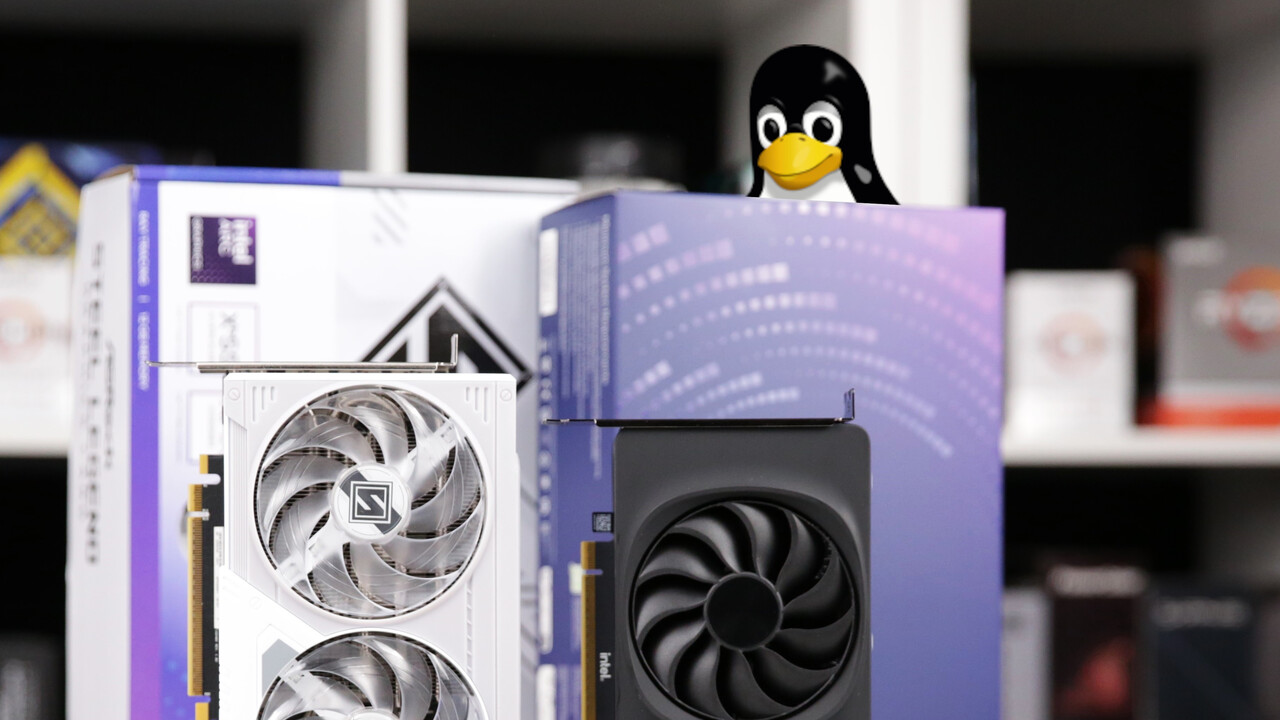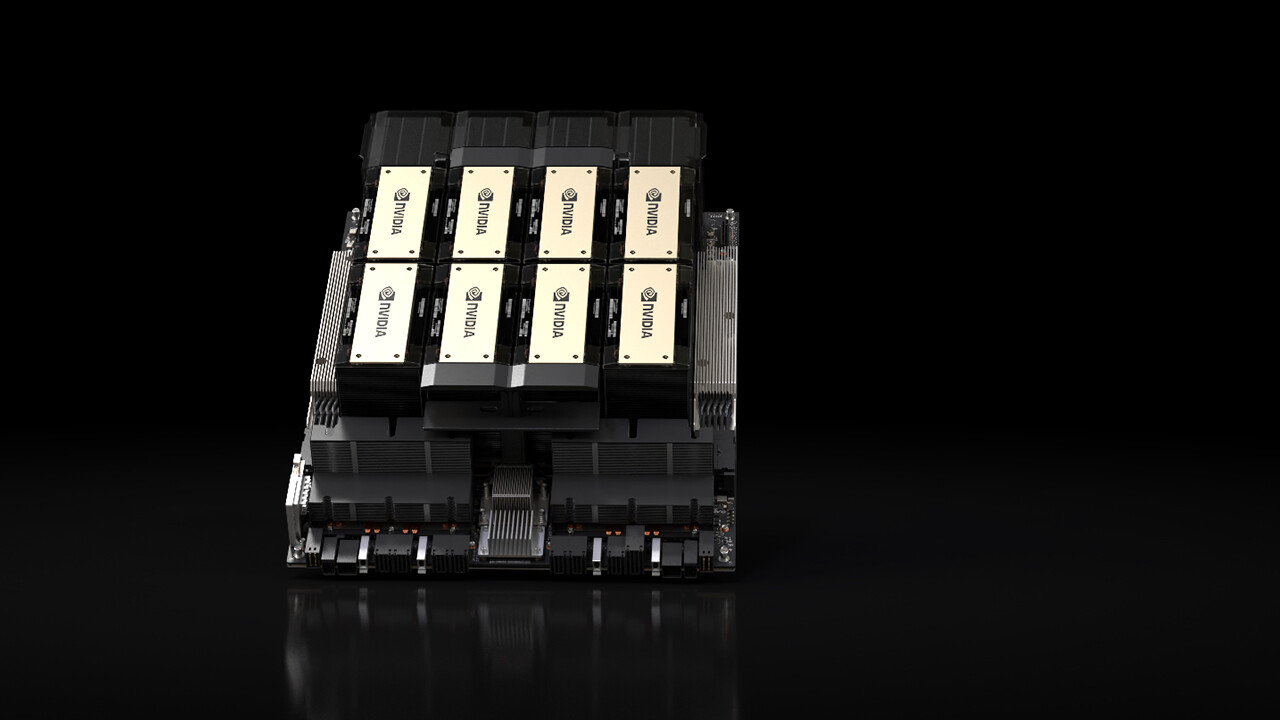Nvidia DLSS 4 in detail: Multi Frame Generation and a new neural network 16 comments
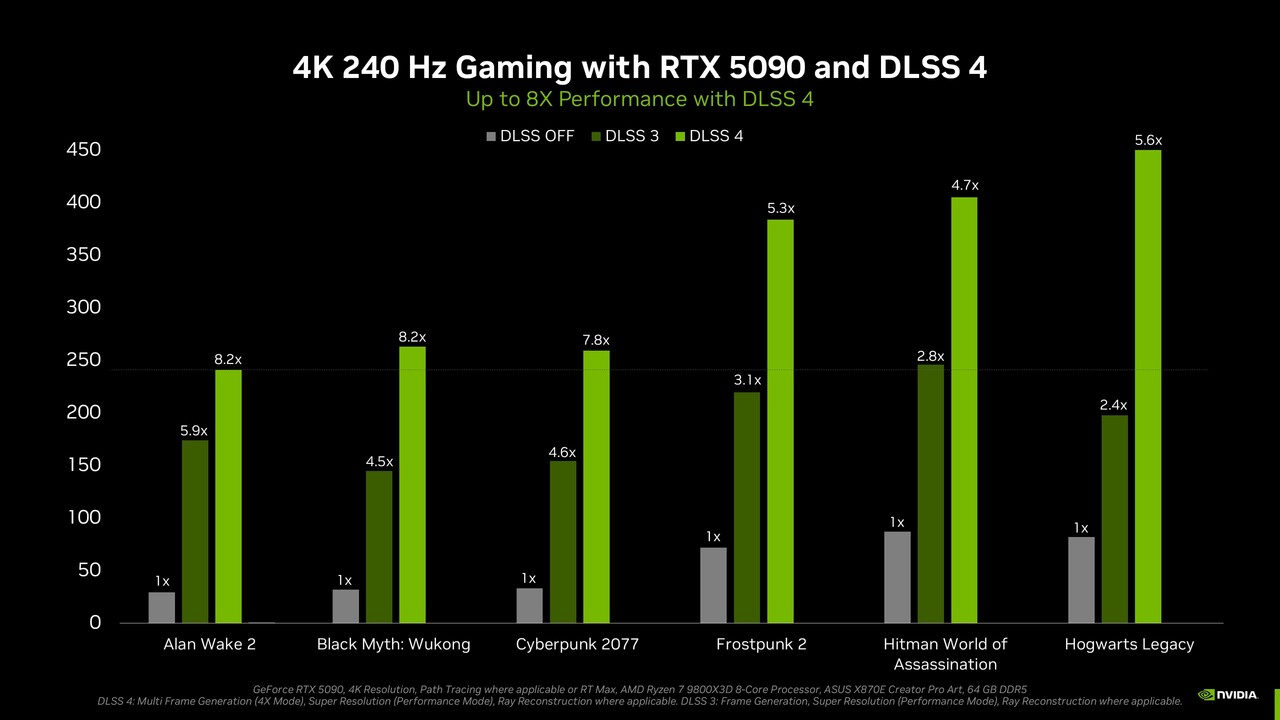
Image: Nvidia
After DLSS 3, it is no surprise that DLSS 4 follows. The basic idea was developed and the number of artificial frames was increased. But that’s not the only change, DLSS 4 also comes with a new neural network which should also bring improvements to older technologies.
Table of Contents Multi-frame generation and new DLSS 4 neural network: old and new in DLSS update SR and RR become prettier, DLSS FG becomes faster and more economical. DLSS SR and RR are initially a beta version DLSS 4 Multi Frame Generation – Only with RTX 5000, the frame rate is supposed to improve. Nvidia says around 70% more FPS
DLSS 4: old and new in the update
DLSS Ray Reconstruction, DLSS Super Resolution and DLAA are now calculated by a newly trained neural network, which is a transformer model and therefore the same basic architecture as ChatGPT, for example. Previously, “convolutional neural networks” (CNN) were used, but according to Nvidia, this has reached the limit of what is possible.
Because CNN mainly monitors pixel movements in a specified region across multiple frames. If the pixel disappeared from this region, the previously obtained information also disappeared. The new neural network based on “Vision Transformer”, on the other hand, can observe pixels across the entire image and across multiple images and independently evaluate their importance. You should use twice as many parameters as with the old network so that the new network can better understand the rendered image.
DLSS SR and RR become prettier, DLSS FG becomes faster and more economical
As a result, Nvidia cites better image stability, more moving detail, and less ghosting as expected improvements with DLSS 4 for the super resolution algorithm. DLSS ray reconstruction also provides better image stability and handling in complex lighting environments.
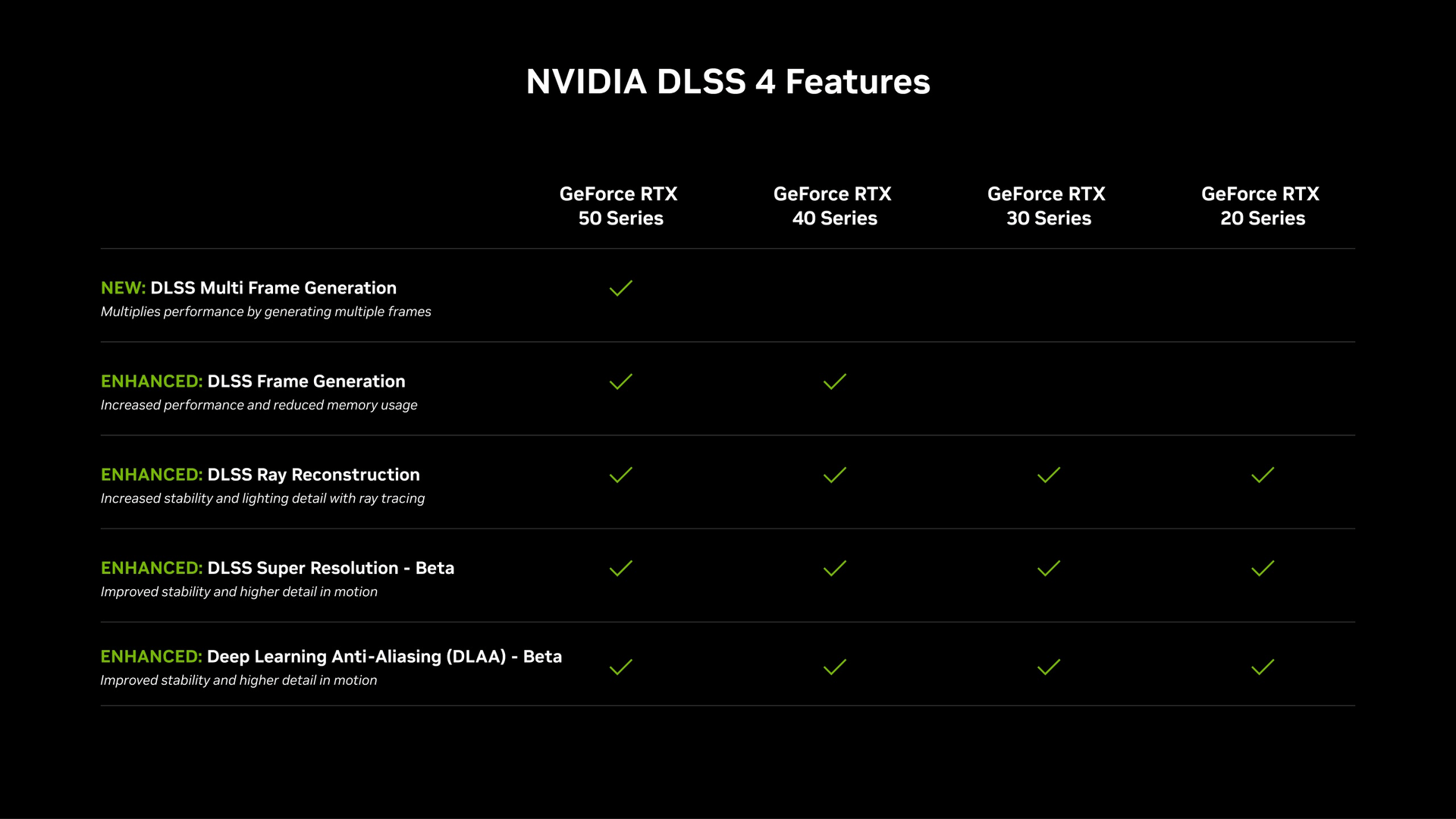 Benefits of Nvidia DLSS 4 (Image: Nvidia)
Benefits of Nvidia DLSS 4 (Image: Nvidia)
DLSS 4 frame generation is intended to be faster than the original DLSS 3 FG. The new neural network should be able to accomplish this task 40% faster. This could solve a drawback of DLSS FG that has always appeared in games: a fairly low increase in FPS. This change was achieved by no longer using the optical flow hardware in the tensor units, with the optical flow function being provided by the neural network. Additionally, memory consumption would have been reduced; the neural network would need 30% less VRAM for frame generation. Nvidia cites Warhammer 40,000: Darktide as an example, where the new network should offer 10% more FPS and at the same time require 400 MB less VRAM.
Nvidia DLSS 4 Super Resolution, DLSS 4 Ray Reconstruction, and DLSS 4 Frame Generation will not only be available on the new GeForce RTX 5000 graphics cards, but will be supported by all GeForce RTX graphics cards. DLSS 4 FG is reserved for RTX 4000 or newer cards.
DLSS SR and RR are initially a beta version
While DLSS 4 FG is already final, DLSS 4 SR and DLSS 4 RR will first appear in beta. The resulting feedback should then be incorporated into the final version as soon as it is ready. Beta versions should eventually be installable on a per-game basis using the Nvidia app and the “DLSS Override” option.
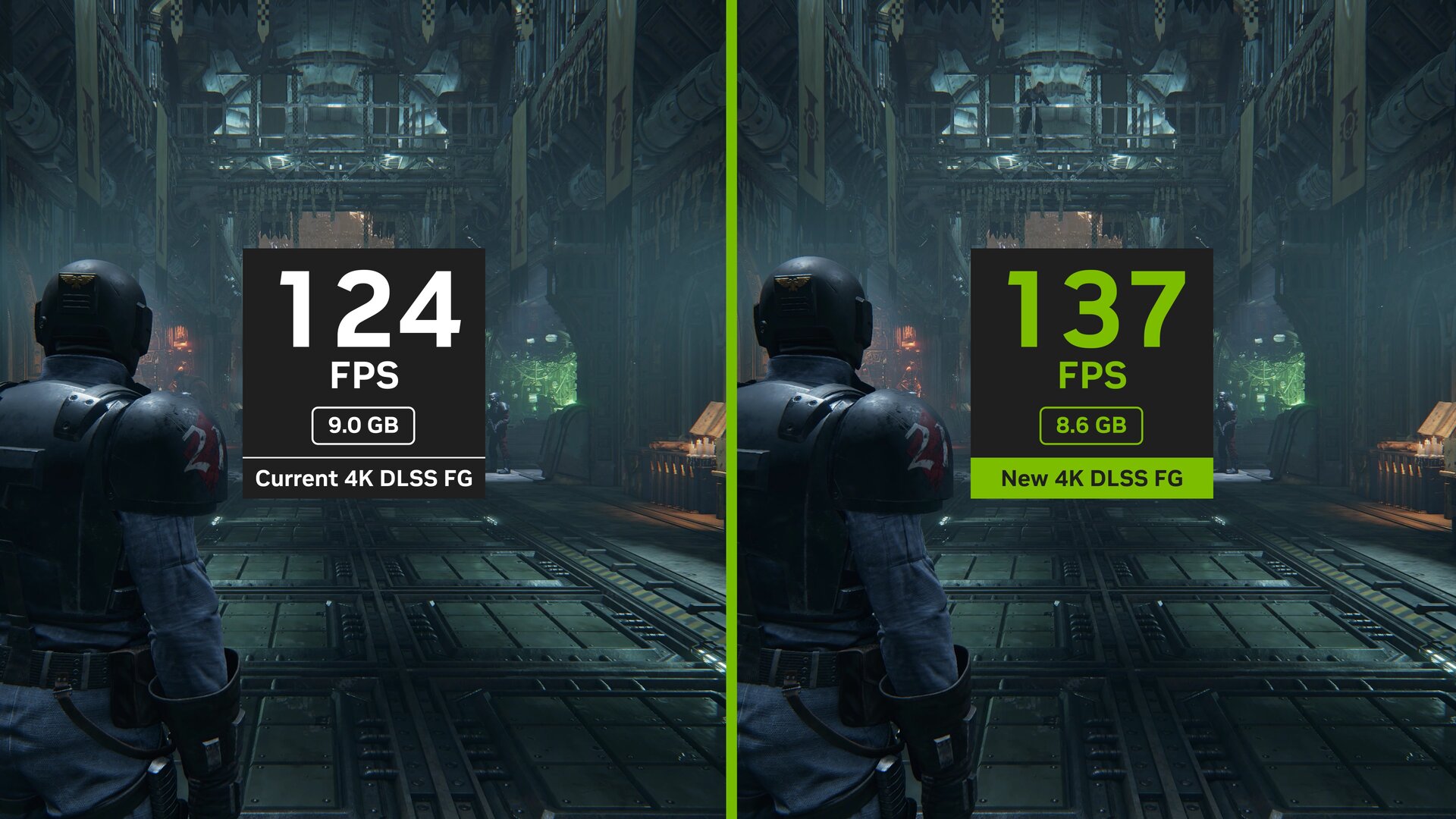 Nvidia DLSS 4 FG performance (version: Nvidia)
Nvidia DLSS 4 FG performance (version: Nvidia)
DLSS 4 multi-frame generation – Only with RTX 5000
The next new feature, DLSS 4 Multi Frame Generation, will only work on the new GeForce RTX 5000 graphics cards and therefore the announced GeForce RTX 5090, GeForce RTX 5080, GeForce RTX 5070 Ti and GeForce RTX 5070.
DLSS MFG takes the idea of DLSS frame generation and simply takes it a step further. No longer is a single image artificially generated, but three are placed between two rendered images. In other words, out of 5 images generated with DLSS MFG, only 2 images are rendered and 3 images are artificially generated.
Neural networks operating simultaneously at 5 per frame should be made possible by the new neural network of DLSS 4 and the new tensor units of the Blackwell architecture. Without this, calculating the additional frames would not increase the frame rate, but would lower it. According to Nvidia, up to 93% of screen pixels can now be artificially created with DLSS 4 SR + MFG.
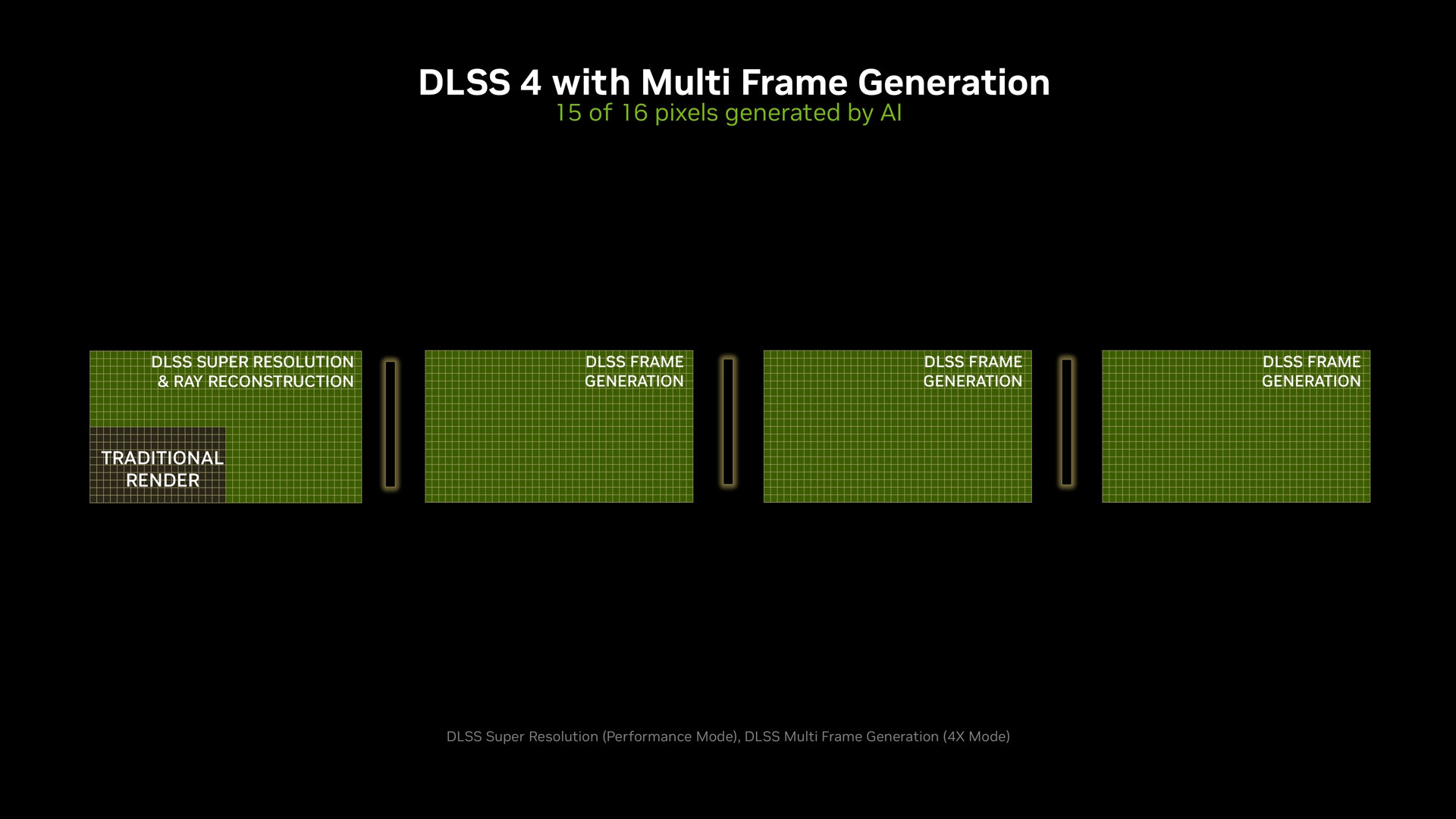 DLSS 4 – more than 93% of pixels are now generated by artificial intelligence (Image: Nvidia)
DLSS 4 – more than 93% of pixels are now generated by artificial intelligence (Image: Nvidia)
Frame pacing should be better
DLSS 4 MFG is said to have a better frame rate than DLSS 3 FG, because the latter is no longer carried out by the CPU. Instead, so-called “hardware flip metering” should be used, which means that the output of the images is now carried out by the display engine of the GPU. This gives Nvidia much more control over frame pacing, which should now work very concurrently with DLSS 4 Multi Frame Generation.
Nvidia announces around 70% more FPS
Nvidia cites a performance advantage of DLSS 4 MFG over “normal” frame generation of 70%. Nvidia shows benchmarks for 6 different games and there are fluctuations in MFG usage. The advantages in the different benchmarks range between 39 percent and 133 percent. As with image generation, the benefit may vary from title to title.
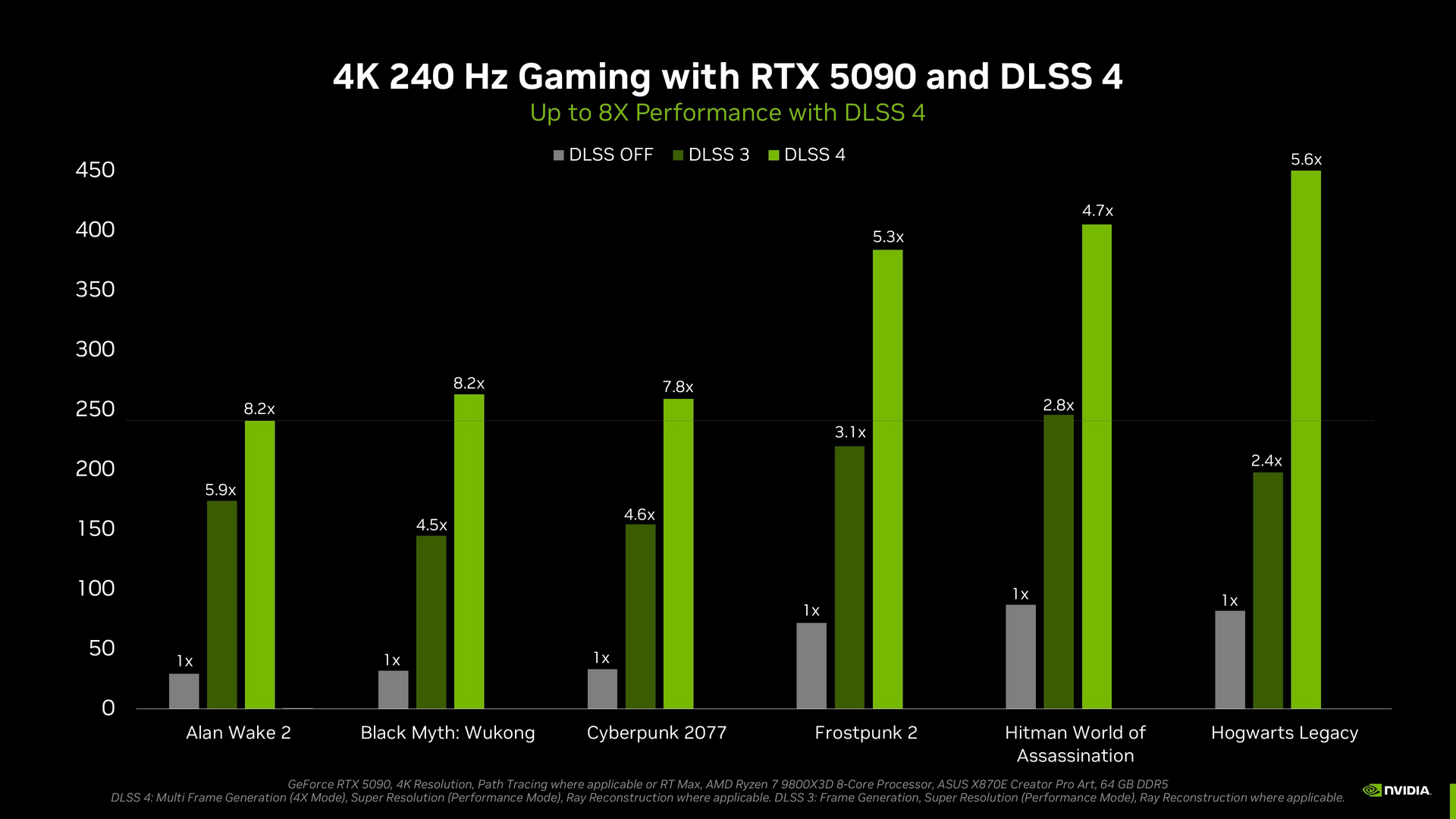 Nvidia DLSS 4 MFG benchmarks (Image: Nvidia)
Nvidia DLSS 4 MFG benchmarks (Image: Nvidia)
The new neural network of DLSS Super Resolution, DLSS Ray Reconstruction and DLSS Frame Generation is backward compatible with already available DLSS games and can be updated, for example, via the Nvidia app (report), the same goes for DLSS Multi Frame Generation: supports a DLSS FG game, can optionally be upgraded to DLSS MFG with a GeForce RTX 5000 graphics card. Nvidia explicitly mentions this possibility and talks about 75 titles that will work with DLSS 4 MFG from day one. However, this may not apply to all titles; the situation is not entirely clear.
 Nvidia DLSS Overide in the Nvidia app (Image: Nvidia)
Nvidia DLSS Overide in the Nvidia app (Image: Nvidia)
In addition to the ability to make games “MFG compatible” via the Nvidia app, there will also be games that natively support DLSS MFG. The feature is then displayed accordingly in the graphics menu. Alan Wake 2, Cyberpunk 2077, Indiana Jones and the Great Circle, and Star Wars Outlaws will support DLSS 4 MFG natively from day one, with Black Myth: Wukong, Baraka: Bladepoint, Marvel Rivals, and Microsoft Flight Simulator 2024 following later. The yet-to-be-released games Black State, Doom: The Dark Ages, and Dune: Awakening will also support DLSS 4 MFG from the start.
Topics: Graphics Cards CES 2025 GeForce GeForce RTX 50 Nvidia Nvidia Blackwell Nvidia CES 2025 Press Conference Source: Nvidia

An engineer by training, Alexandre shares his knowledge on GPU performance for gaming and creation.
